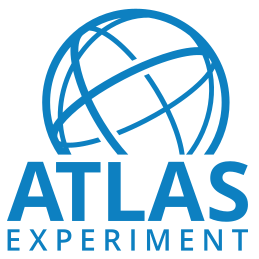HICorePhysics primary dataset in RECO format from the 2.76 TeV Pb-Pb run of 2010 (/HICorePhysics/HIRun2010-PromptReco-v3/RECO)
/HICorePhysics/HIRun2010-PromptReco-v3/RECO, CMS collaboration
Cite as: CMS collaboration (2020). HICorePhysics primary dataset in RECO format from the 2.76 TeV Pb-Pb run of 2010 (/HICorePhysics/HIRun2010-PromptReco-v3/RECO). CERN Open Data Portal. DOI:10.7483/OPENDATA.9S5F.BY3B
Dataset Collision Heavy-ion physics CMS 2.76TeV PbPb CERN-LHC
Description
HICorePhysics primary dataset from the 2.76 TeV Pb-Pb run of 2010.
The list of validated runs, which must be applied to all analyses, either with the full validation or for an analysis requiring only muons, can be found in
Dataset characteristics
5964915 events. 5436 files. 17.6 TiB in total.System details
GR_R_39X_V6B::AllCMSSW_3_9_2_patch5
Recommended container image for analyses is available in the following locations (see guide):
docker.io/cmsopendata/cmssw_3_9_2_patch5-slc5_amd64_gcc434:latestgitlab-registry.cern.ch/cms-cloud/cmssw-docker-opendata/cmssw_3_9_2_patch5-slc5_amd64_gcc434:latest
How were these data selected?
During the heavy-ion run, events were directed to this primary dataset through several different HLT trigger paths, which can be studied and selected with the example usage code linked below. The possible HLT trigger paths in this dataset (the list may be incomplete):
HLT_HIJet35U_Core
HLT_HIJet50U_Core
HLT_HIJet75U_Core
HLT_HIJet90U_Core
HLT_HIL2DoubleMu3_Core
HLT_HIL2Mu20_Core
HLT_HIL2Mu5Tight_Core
HLT_HIMinBiasHfOrBSC_Core
HLT_HIPhoton15_Cleaned_Core
HLT_HIPhoton20_Cleaned_Core
HLT_HIPhoton30_Cleaned_Core
How were these data validated?
During data taking all the runs recorded by CMS are certified as good for physics analysis if all subdetectors, trigger, lumi and physics objects (tracking, electron, muon, photon, jet and MET) show the expected performance. Certification is based first on the offline shifters evaluation and later on the feedback provided by detector and Physics Object Group experts. Based on the above information, which is stored in a specific database called Run Registry, the Data Quality Monitoring group verifies the consistency of the certification and prepares a json file of certified runs to be used for physics analysis. For each reprocessing of the raw data, the above mentioned steps are repeated. For more information see:
CMS data quality monitoring: Systems and experiences
The CMS Data Quality Monitoring software experience and future improvements
The CMS data quality monitoring software: experience and future prospects
How can you use these data?
You can access these data through the CMS Open Data container or the CMS Virtual Machine. See the instructions for setting up one of the two alternative environments and getting started with CMS heavy-ion data data in
Running CMS analysis code using Docker
Disclaimer
The open data are released under the Creative Commons CC0 waiver. Neither the experiment(s) ( CMS ) nor CERN endorse any works, scientific or otherwise, produced using these data. All releases will have a unique DOI that you are requested to cite in any applications or publications.






